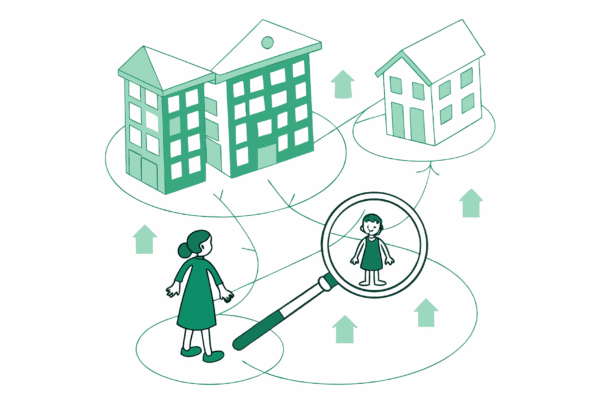Understanding the Market, Valuation, and Key Steps for a Successful Transition
Selling your Geriatric Behavioral Health practice in South Dakota involves navigating a unique market filled with both clear demand and specific regulatory hurdles. The state’s aging population creates a strong foundation for value, but achieving a successful sale requires careful preparation and strategic timing. This guide provides insight into the current landscape to help you understand your opportunities and plan your next steps.
Market Overview
The market for geriatric behavioral health in South Dakota is defined by a growing need and a limited supply of services. This creates a favorable environment for practice owners who are considering a sale. Several factors drive this demand:
- An Aging Population: The number of South Dakotans over 65 grew by 33% in the last decade. This demographic shift is projected to continue, directly increasing the patient base for geriatric services.
- A Provider Shortage: South Dakota currently meets only about 26% of its need for mental health professionals. This workforce gap means established practices with a stable patient base are highly attractive to buyers looking for immediate market entry.
- National Sector Growth: The U.S. behavioral health market is expanding, with projections showing a 6.40% compound annual growth rate. This national trend attracts investment and increases buyer interest in strong, local practices like yours.
Key Considerations
Beyond the strong market demand, a successful sale depends on navigating state-specific rules and showcasing your practice’s stability. Buyers in South Dakota look for well-run operations that are compliant from day one.
Navigating the Regulatory Environment
South Dakota has specific healthcare laws that directly impact who can buy your practice and how a deal is structured. The Corporate Practice of Medicine (CPOM) doctrine, for example, restricts practice ownership by non-physician entities. Understanding these rules is important for identifying the right pool of potential buyers. Furthermore, while the state limits non-compete clauses for employees, these restrictions do not apply to the sale of a practice, making this a key point of negotiation.
Showcasing Operational Strength
A potential buyer is acquiring your patient base and your operational efficiency. You should be prepared to present a clear picture of your referral networks, patient demographics, and payer mix. Demonstrating efficient billing, scheduling, and a high standard of care provides confidence and supports a higher valuation.
Market Activity
While specific transaction data for geriatric behavioral health practices in South Dakota isn’t widely published, the broader healthcare landscape shows a clear trend of consolidation. We see sustained merger and acquisition activity among hospitals and larger health systems. More importantly, related sectors like home health and senior living saw very high deal volume recently. This indicates that investors and strategic buyers are actively seeking to expand their presence in the senior care market. This creates a ripple effect, increasing the value and appeal of well-run, specialized practices like yours that can serve as a critical piece in a larger care network. Timing your entry into this active market can make a significant difference.
Sale Process
Selling your practice is a structured process that moves through distinct phases. Preparing in advance for each step is the best way to ensure a smooth transition and protect your practice’s value. Many owners find that the preparation and due diligence stages are far more intensive than they anticipate.
| Phase | Key Objective |
|---|---|
| 1. Preparation & Valuation | Clean up financials, normalize your EBITDA, and establish a defendable market value. |
| 2. Confidential Marketing | Identify and discreetly approach a curated list of qualified strategic and financial buyers. |
| 3. Negotiation & Due Diligence | Field offers, negotiate terms, and prepare for a deep dive into your operations and financials. |
| 4. Closing & Transition | Finalize legal documents, manage regulatory approvals, and ensure a smooth handover. |
Valuation
Determining the value of your practice goes beyond just looking at revenue. Sophisticated buyers value your practice based on its profitability and future potential. The most common method is applying a valuation multiple to your practice’s Adjusted EBITDA. EBITDA stands for Earnings Before Interest, Taxes, Depreciation, and Amortization. “Adjusted” is the important part. It means we add back personal expenses or one-time costs to show the true cash flow of the business. For example, a salary for the owner that is above market rate can be partially added back. This adjusted number gives a buyer the clearest picture of their potential return. The multiple applied to that number depends on factors like your payer mix, growth history, and how much the practice relies on you personally.
Post-Sale Considerations
A successful transaction isn’t just about the sale price. It’s also about securing your legacy and ensuring a smooth transition for your patients and staff. Planning for what happens after the deal closes is a critical part of the negotiation process.
Your Future Role You will need to decide what you want your involvement to be. Do you want to retire immediately, or would you prefer to continue practicing for a set period? This is a key negotiating point that impacts the deal structure.
The Non-Compete Agreement Since non-competes are enforceable in practice sales in South Dakota, the terms of this agreement are very important. You need to carefully define the scope, duration, and geographic area to match your personal and professional plans.
Staff and Patient Transition A detailed plan for communicating the change to your staff and ensuring continuity of care for your patients is a high priority for any buyer. Protecting your team helps protect the value of the business through closing.
Frequently Asked Questions
What is driving the demand for Geriatric Behavioral Health practices in South Dakota?
The demand is driven by an aging population with a 33% increase in those over 65 in the last decade, a shortage of mental health providers filling only 26% of the demand, and national growth trends in the behavioral health sector with a 6.40% compound annual growth rate.
What regulatory challenges should I be aware of when selling a Geriatric Behavioral Health practice in South Dakota?
South Dakota has specific healthcare laws including the Corporate Practice of Medicine (CPOM) doctrine that limits ownership to certain entities, and rules on non-compete clauses which apply differently to employees and practice sales. Understanding these regulations is vital for identifying suitable buyers and structuring the deal.
How is the value of a Geriatric Behavioral Health practice determined in South Dakota?
Value is typically based on adjusted EBITDA (Earnings Before Interest, Taxes, Depreciation, and Amortization), which accounts for profitability and future potential. Adjustments include adding back personal or one-time expenses. Valuation is influenced by factors like payer mix, growth history, and how much the practice relies on the current owner.
What are the essential phases in the sale process of a Geriatric Behavioral Health practice?
The sale process includes: 1) Preparation and Valuation, 2) Confidential Marketing to qualified buyers, 3) Negotiation and Due Diligence including offers and terms, and 4) Closing and Transition with legal and regulatory steps and a smooth handover.
What should I consider regarding my role and agreements after selling my practice?
Post-sale considerations include deciding whether to retire or continue practicing for a period, negotiating non-compete agreements with clear scope, duration, and geographic limits, and planning communication and transition strategies for staff and patients to maintain continuity of care and protect the practice value.



